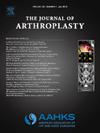社会经济地位低与全关节置换术后患者自述结果较差有关:系统回顾。
IF 3.4
2区 医学
Q1 ORTHOPEDICS
引用次数: 0
摘要
背景:社会经济地位(SES)--个人或群体的社会地位或阶级,通过教育、收入和职业来衡量--与骨科手术的不良预后有关。全膝关节(TKA)和全髋关节(THA)假体是最常被研究的有关社会经济地位和患者报告结果测量(PROMs)的骨科手术,但研究结果却相互矛盾。本系统性综述旨在评估全关节置换术(TJA)后 SES 对 PROMs 的影响:我们按照系统综述和荟萃分析首选报告项目 (PRISMA) 指南,利用 MEDLINE (Ovid)、EMBASE (Ovid) 和 Cochrane Library 进行了文献检索,检索时间从数据库建立之初(分别为 1971 年、1974 年和 1996 年)至 2023 年 8 月 2 日,以确定对接受初级择期 TJA 的成人进行 SES 和 PROMs 调查的研究。如果研究对三个 SES 变量(收入、教育或就业状况)中的一个进行了评估,并使用经过验证的 PROM 报告了至少一年的评分,则被纳入研究。两名审稿人独立筛选研究并提取数据:本系统综述共纳入 16 项研究。共分析了 55,875 例关节置换术,包括 24,055 例 TKAs 和 31,820 例 THAs。在这些研究中,有 8 项研究对收入进行了评估,15 项研究对教育程度进行了评估,2 项研究对就业状况进行了评估。大多数调查收入的研究发现,较低的收入与较差的术后 PROMs 之间存在统计学意义上的显著关联。有 10 项研究发现,教育程度与术后 PROMs 之间存在统计学意义上的显著关联,这些研究涉及到所纳入的教育程度研究中 90% 的患者。有两项研究发现,与就业和退休患者相比,失业的 THA 患者的 PROMs 改善程度较低:我们的系统性综述发现,TJA术后收入、教育程度、就业和PROMs之间存在一些重要关联。医疗服务提供者应特别关注低收入、教育程度较低和失业的患者。这些患者可能会受益于有针对性的干预措施,从而在 TJA 术后获得可观的临床获益。本文章由计算机程序翻译,如有差异,请以英文原文为准。
Low Socioeconomic Status Is Associated With Worse Patient-Reported Outcomes Following Total Joint Arthroplasty: A Systematic Review
Background
Socioeconomic status (SES)—an individual or group’s social standing or class, as measured by education, income, and occupation—has been associated with poor surgical outcomes in orthopaedics. Total knee arthroplasty and total hip arthroplasty (THA) are the most commonly investigated orthopaedic surgeries regarding SES and patient-reported outcome measures (PROMs), yet the results are contradictory. The aim of this systematic review was to assess the impact of SES on PROMs following total joint arthroplasty (TJA).
Methods
We performed a literature search following the Preferred Reporting Items for Systematic Reviews and Meta-Analyses guidelines utilizing MEDLINE (Ovid), EMBASE (Ovid), and Cochrane Library from database inception (1971, 1974, and 1996, respectively) to August 2, 2023, to identify studies investigating SES and PROMs in adults undergoing primary elective TJA. Studies were included if they evaluated one of three SES variables (income, education, or employment status) and reported at least one-year scores using a validated PROM. There were two reviewers who independently screened studies and extracted data.
Results
There were 16 studies included in this systematic review. A total of 55,875 arthroplasties, including 24,055 total knee arthroplasties and 31,820 THAs, were analyzed. Of the studies, eight evaluated income, 15 evaluated education, and two evaluated employment status. The majority of studies investigating income found a statistically significant association between lower income and worse postoperative PROMs. There were ten studies, involving 90% of all patients from the included education studies, which found a statistically significant association between education and postoperative PROMs. There were two studies that found unemployed THA patients had lower improvements in PROMs compared to employed and retired patients.
Conclusions
Our systematic review found several significant associations between income, education, employment, and PROMs after TJA. Providers should pay special attention to lower-income, less educated, and unemployed patients. These patients may benefit from targeted interventions to achieve substantial clinical benefit after TJA.
求助全文
通过发布文献求助,成功后即可免费获取论文全文。
去求助
来源期刊

Journal of Arthroplasty
医学-整形外科
CiteScore
7.00
自引率
20.00%
发文量
734
审稿时长
48 days
期刊介绍:
The Journal of Arthroplasty brings together the clinical and scientific foundations for joint replacement. This peer-reviewed journal publishes original research and manuscripts of the highest quality from all areas relating to joint replacement or the treatment of its complications, including those dealing with clinical series and experience, prosthetic design, biomechanics, biomaterials, metallurgy, biologic response to arthroplasty materials in vivo and in vitro.
 求助内容:
求助内容: 应助结果提醒方式:
应助结果提醒方式:


